All About Tires: 5 Tips for Motorcycle Tire Safety
Engines are the star of the motorcycle show — pumping out horsepower that moves the machine forward. Paint, chrome, and bodywork are another flashy part of the formula which makes it possible, even when a bike isn’t moving, for riders and non-riders alike to ogle it.
But, when it comes to performance, motorcycle tires are (literally) where the rubber meets the road. No matter what style of bike you ride, tires are essential to performance and safety. You’ve got to pay more attention to bike tires than to car tires. Here are some things you need to know to ride safely and with optimal performance.
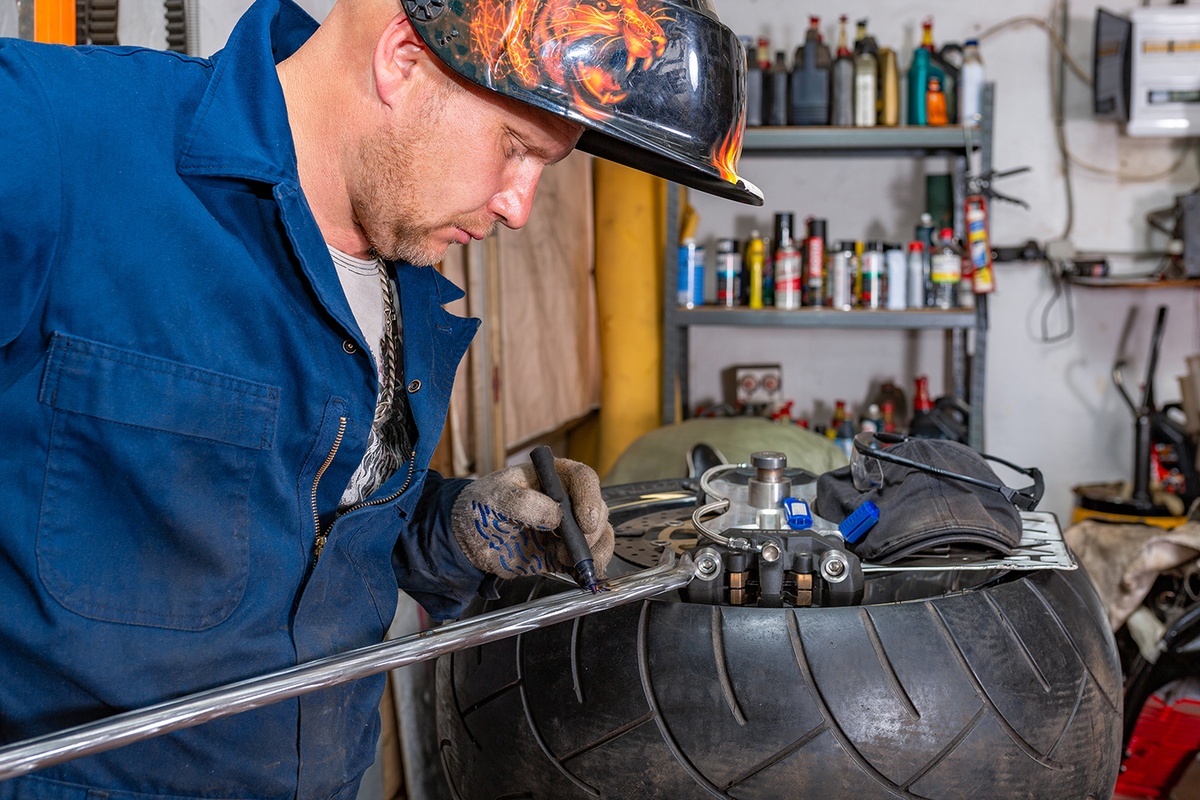
1. Keep an eye on motorcycle tire pressure
Most motorcycle tires will lose a bit of air pressure every month. On some bikes, the difference is negligible, but it still adds up over time, even if your rubber and rims are in perfect condition. On other bikes, the pressure loss is much more noticeable and can cause trouble in just a few weeks or days.
If you’re losing a lot of air pressure, you need to find out why; check your valve stem and your rims, for starters. But even if you aren’t losing air pressure, how will you know, unless you’re keeping an eye on it? In addition to potential crashes, underinflated tires mean poor performance and decreased longevity. Even if you’re riding a new bike on new rubber, you need to watch tire pressure.
Ideally, you should check it before every ride. You could have picked up a nail or something during your last ride, and a pre-ride check will help prevent a nasty surprise. Another benefit of a pre-ride check: If your tire is exhibiting unusual wear, chunking knobs, or suffering other damage, you’ll notice it sooner.
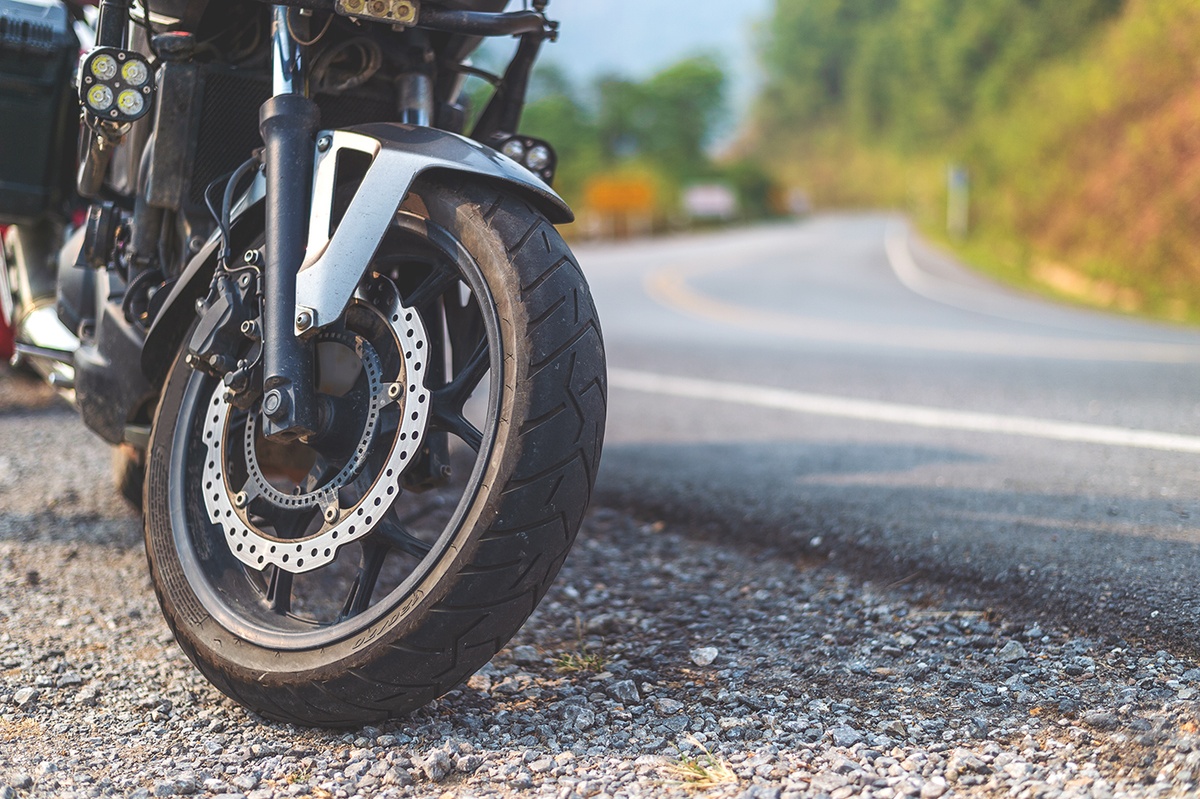
2. Choose the right tire for the job
Your motorcycle came from the factory with a set of tires matched to its intended usage: sportbikes come with sticky tires that grip in the corners, off-road bikes come with knobbies that bite into the dirt, cruisers come with stiff tires to handle heavier loads.
Motorcyclists run into trouble when they choose tires that aren’t properly matched to their bikes. Maybe they put knobbies on a street bike, to give it a scrambler look, or maybe they installed a less-pliable bias-ply tire instead of a radial tire, to save money. Maybe they put a too-wide tire, thinking they’d gain traction. Some riders even put car tires on the back of heavy touring bikes, to save money and increase their tire life.
You can certainly get away with some coloring outside the lines; you don’t need to stick with the same tires that come from the factory every time you need new rubber. However, it’s best to follow the manufacturer’s guidelines with regards to size and tire type (as in the above example, don’t use bias-ply instead of radials). If your tire rubs on your swingarm, wears prematurely, or doesn’t offer sufficient grip, mixing tires can be an expensive and dangerous mistake. You don’t want to go through the hassle and expense of installing new tires on your motorcycle only to find the handling has gone all squirrelly because you didn’t follow the recommendations.

3. Age matters
Motorcycle tires wear out from usage, as you’d expect, but they also lose their grip as they age, even if they aren’t putting down miles. The rubber visibly wears off as you roll down the road, as you can easily see when the treads wear down. However, motorcycle tires are also subject to oxidization; the older they are, the less pliable the rubber is. That means less grip, which again translates to less performance and less safety.
This is probably more noticeable on a high-performance superbike than a weedy 50cc step-through, but it’s something you should keep an eye on, no matter what you ride. Tire manufacturers stamp their tires’ production dates on the sidewalls in a four-digit code (look for something like 1019, which would mean the tire was made in the tenth month of 2019). Motorcycle tire manufacturers recommend you change tires after they’re about five years old, to make sure you’re rolling safely.
If you’re buying new tires and riding regularly, this won’t be an issue, usually. If you buy from a local dealership, you can make sure they aren’t trying to offload a too-old tire on you. If you buy online, you’ve got to take whatever tires they send, but even in that case, you probably won’t end up with something more than a year or two old — that’s got plenty of life left if you’re putting on regular mileage since bike tires wear out so quickly.
However, if you’re buying an older tire on the cheap from a second-hand website like Craigslist, or a dealer with new old stock lying around, then you’ve got to keep an eye on this sort of thing. The same goes for used bike purchases — if you’re buying a motorcycle that’s rolling on older tires, you should probably change them out.
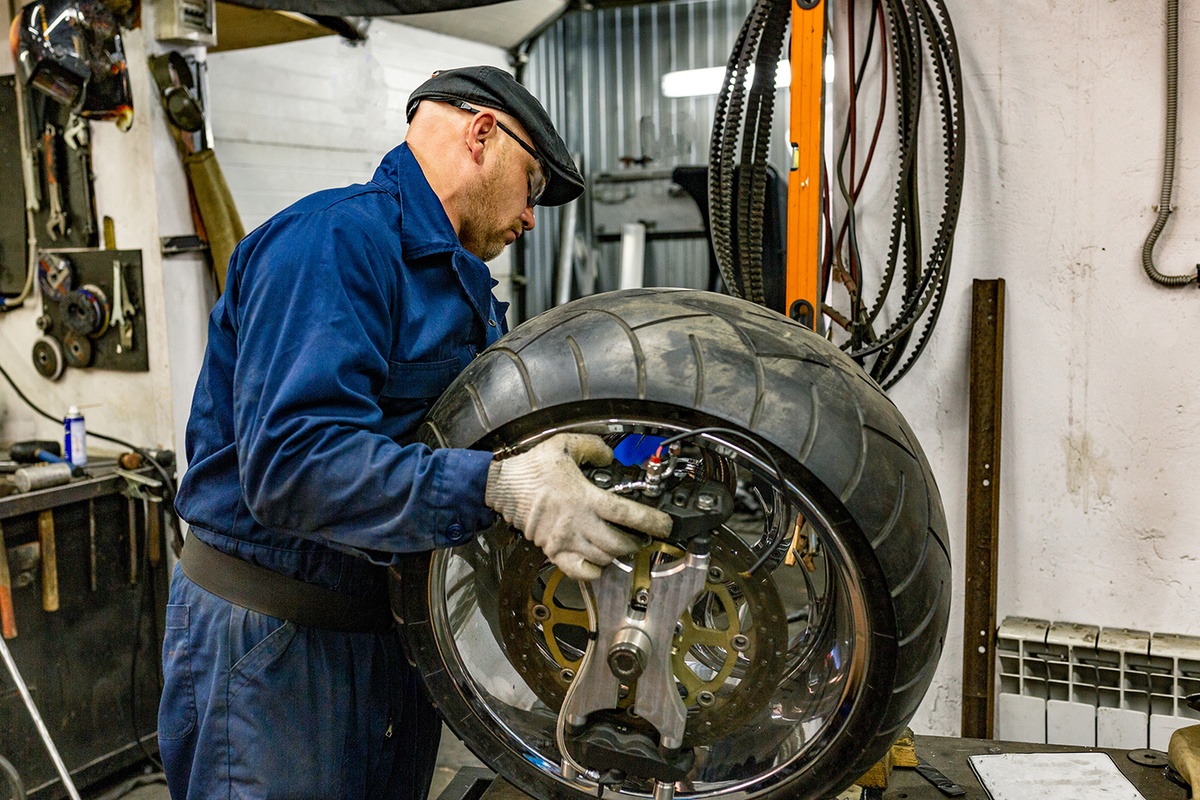
4. All brands are not created equal
This won’t surprise experienced riders, but noobs need to know the $150 tire they bought won’t usually offer the same performance or longevity as a $300 tire.
This is not to say that discount motorcycle tires are inherently bad; some value-oriented tires are great bang-for-buck options, especially on machines where high-speed performance is less of an issue (small-cc cruisers or dual sports, for example). And sometimes, even if you want a Michelin, a Kenda is all that’s available locally.
However, while the best motorcycle tires are often more expensive, they’ll usually last longer, and you’re less likely to have issues with things like self-destructive knobbies—as expensive brands usually have better quality control. The sticker price might be higher, but you’ll get more mileage and save money on tire changes. If they don’t last longer, the pricier tires usually offer better grip, at least. Generally speaking, you get what you pay for.
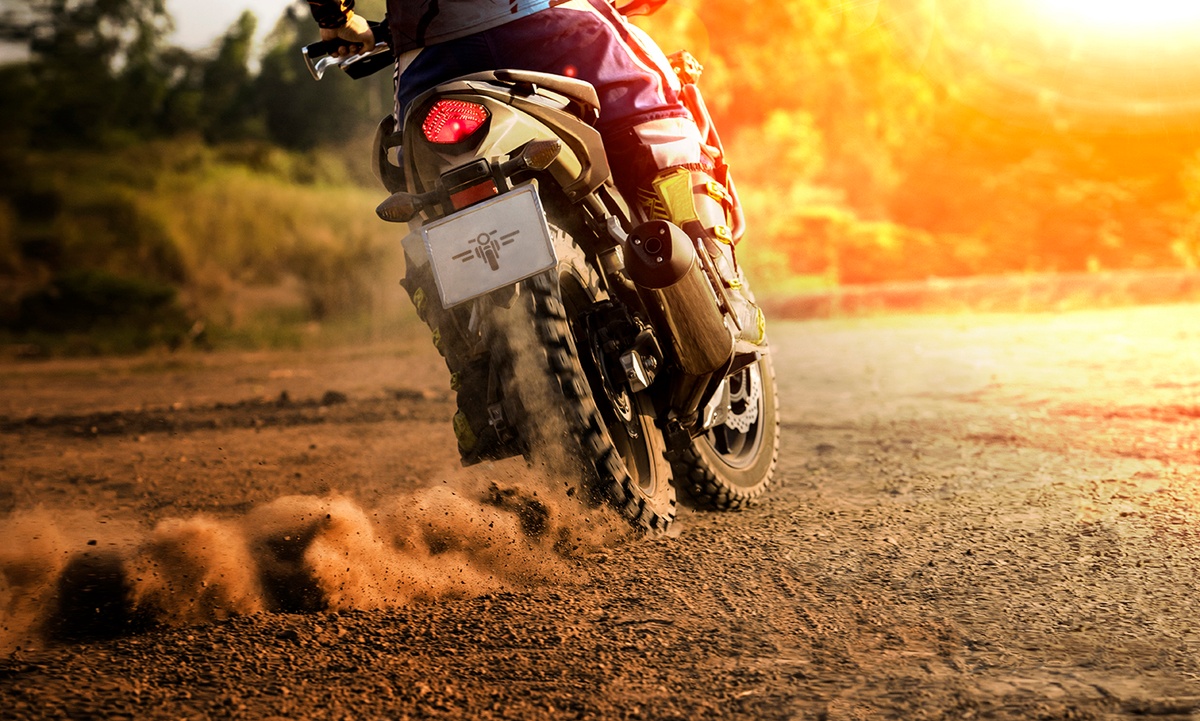
5. Experiences may differ
Although you can make some broad recommendations about tires (use what the manufacturer specified, etc.), remember that everyone has a different riding style. Rider A might find a particular set of tires doesn’t suit them, but at least they get 10,000 miles from them. Rider B might find those tires work very, very nicely for them, but they only get 5,000 miles from a set. What works, or doesn’t work, for another rider may not have the same results for you.
Having said that, the guys and gals at your local dealership probably have a good idea of what works for you and your bike, and you’ll also get advice from experienced riders. Over time, you’ll figure out what tires suit your needs and budget, but while you’re on that journey, it pays to listen to what other riders have learned.
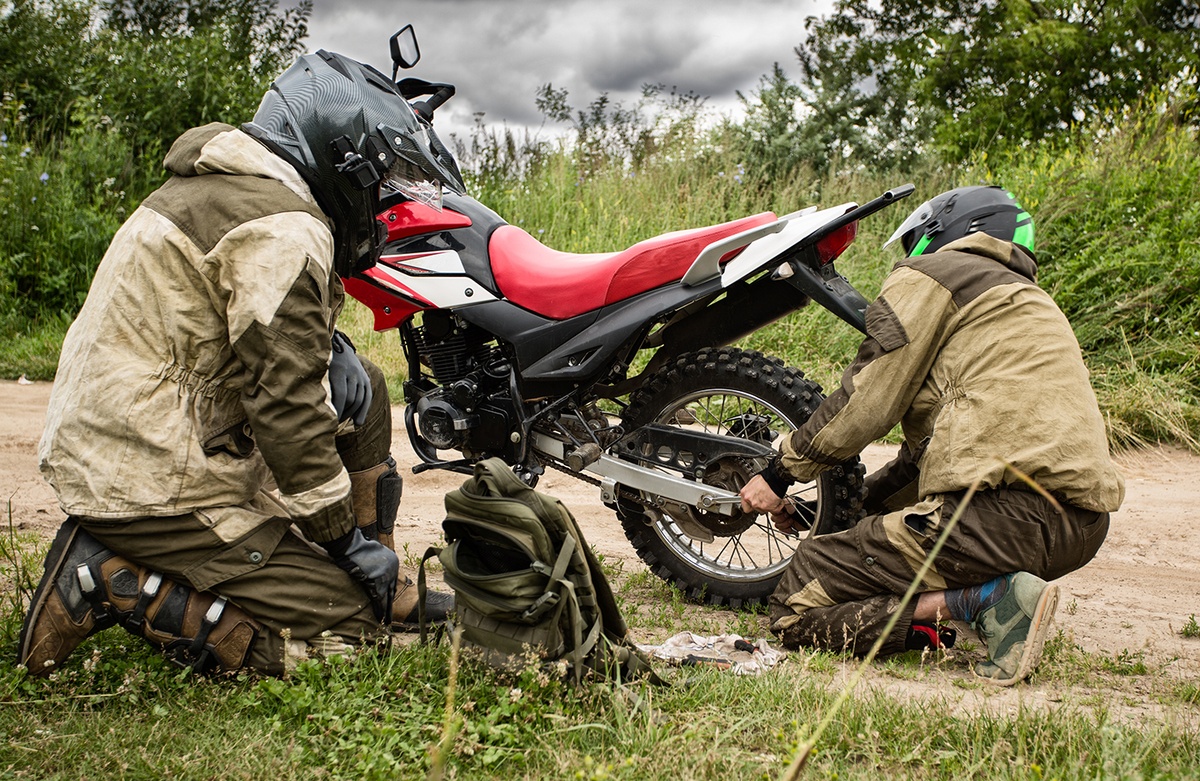
Contact the Twisted Road team about their bike rental program: www.twistedroad.com
